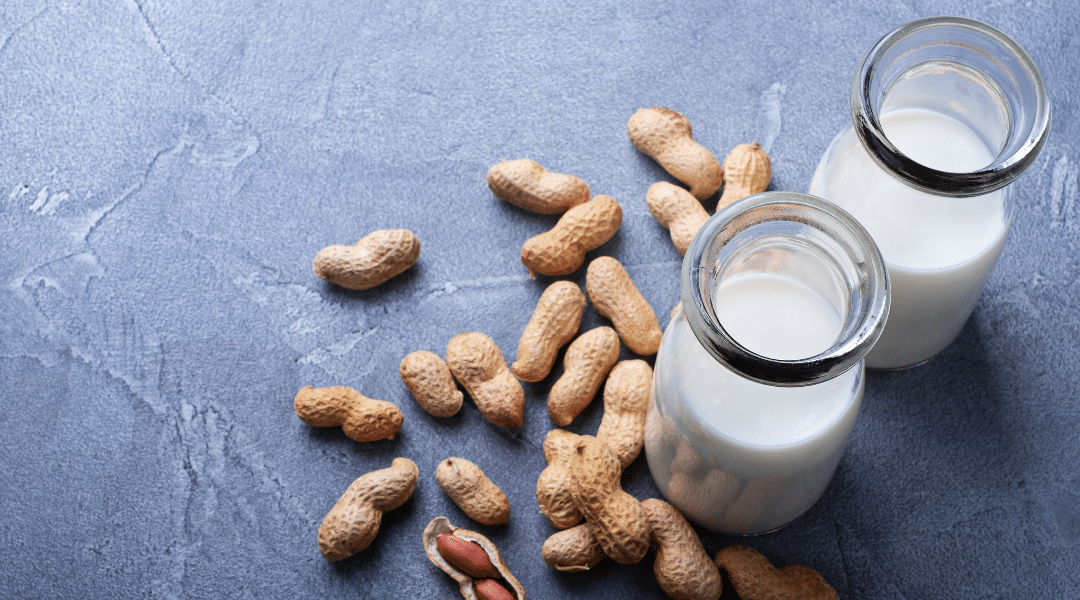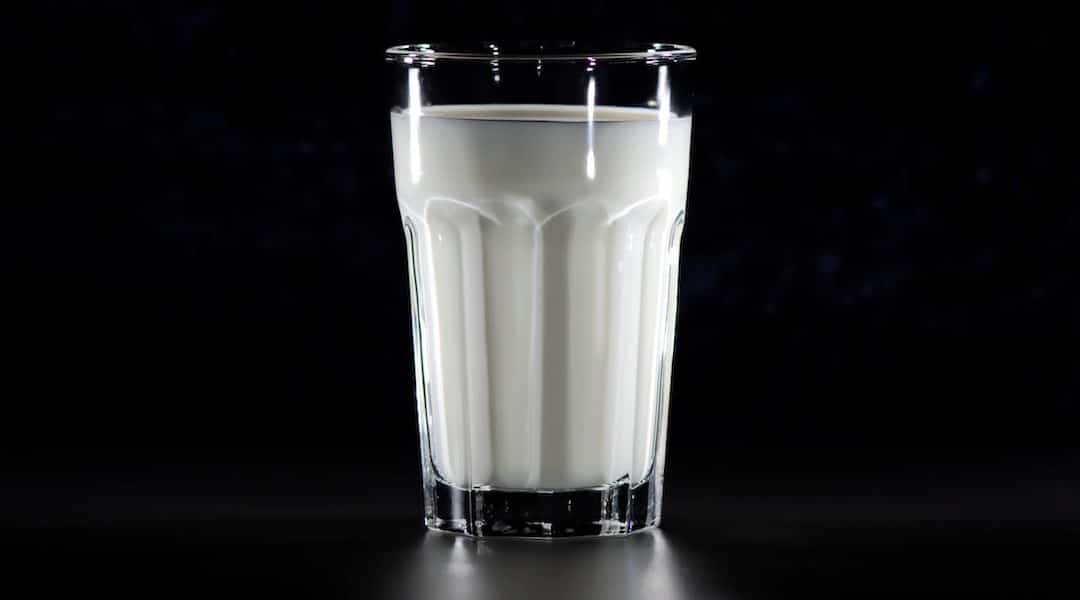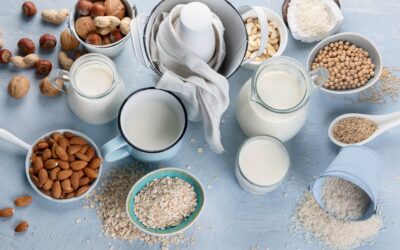Even as an Integrative Physician in my 40s, I love competitive sports and being physically active. I’ve competed in soccer, tennis, cross-country, sand volleyball, and basketball, and I regularly practice ashtanga yoga and rock climbing. Being this physically active is demanding on the body, and I can’t get away with the same lackadaisical complacency toward diet and recovery that I had when I was younger. To improve my longevity, I shifted toward a whole food plant-based diet and cut out dairy. This simple change has allowed me to continue to enjoy the sports I love. Even if you’re not as active, you can still experience a tremendous quality of life benefit from going dairy-free. Through my research and practice, I have learned there are hidden risks behind dairy consumption that the general public are kept in the dark about. My goal is get more people to take care of themselves through improved dietary choices—not through pills or procedures—and it starts with ditching dairy.
1. Dairy is high in saturated fat
Many are aware that saturated fat can increase the risk of heart disease by developing plaques in our arteries over time. However, a high-fat diet can also lead to insulin resistance per Neal Barnard, MD, a leading physician-scientist. As an athlete, insulin resistance would be akin to having a diminished ability to use blood sugar and thus ATP—the main energy currency of the body. This means decreased physical performance and slower recovery. But we are not just talking about muscle performance—The Rochester Young Men’s Study, an analysis of sperm and diet from 189 men between the ages of 18-22, showed that high-fat dairy products (whole milk, cream, and cheese) were associated with decreased sperm motility and abnormal sperm shape. (1) The fact that dairy is high in saturated fat alone provides multiple reasons to ditch dairy—it increases the risk of heart disease, increases insulin resistance, and hinders athletic and sexual performance.
2. Dairy consumption is inefficient for performance and can be downright painful
The primary carbohydrate in milk is lactose. Of all the dietary sugars, lactose is hydrolyzed (broken down) the most slowly. (2) After weaning, a large part (about 75 percent) of the world population undergoes a genetically determined decline in the small intestine lactase activity—termed adult-type hypolactasia or lactase deficiency—which can lead to maldigestion of lactose. (3) About 30 million Americans have lactose intolerance by age 20 and the incidence of this increases with age. Lactose intolerance can lead to bloating, diarrhea, and abdominal pain—none of which athletes want to experience either pre- or post-workout. If we are thinking about optimal performance, we want to consume nutrients that are the easiest and most efficient for us to break down and assimilate. Lactose is not it.
3. Cow’s milk is linked to higher risk of disease and fertility issues
Milk has bovine sex hormones such as estrogen and testosterone. Some needlessly worry about the phytoestrogens in soy, but truly, we should be far more concerned about consuming bovine hormones through milk and cheese. Dairy cows are raised and treated much differently than they were in the past. Genetic modification selects for cows that produce more growth and sex hormones which allows them to label the milk boxes with “no added growth hormone.” There’s no need to inject cows with hormones, because they’re already producing them! Milk consumption is now linked, statistically, to decreased sperm counts, infertility, and cancer in humans. As an example, a recently published study in more than 50,000 women found that higher intakes of cow’s milk were associated with an increased risk for breast cancer. (4)
4. Casein in milk may grow more than just muscles
In animal studies, casein—one of the predominant proteins found in milk—has been shown to grow tumors. In epidemiological studies, it has been shown to be linked to increased rates of cancer in humans. (5) While research is still being done on the link between cancer and dairy consumption, the evidence continues to point toward a scary relationship between consuming dairy and developing a hormone-dependent form of cancer.
5. You may be drinking milk linked to Bovine Leukemia Virus (BLV)
Per a November 15, 2017 article by Michigan State University Extension, “The overall prevalence of BLV in U.S. dairy cattle has risen dramatically from less than 10 percent in the 1970s. Our 2016 survey of 103 herds in 11 states found that 42 percent of our U.S. dairy cows are infected with BLV … About 95 percent of herds had at least one BLV ELISA-positive animal, and older cows were more likely to be infected than younger cows … BLV does not get much attention from most dairy producers. About half of dairy producers in our 2016 survey thought that BLV was ‘not a problem,’ while almost 40 percent thought that BLV was a small but insignificant problem … Producers know that a small percentage of BLV-infected cattle can develop tumors, but many do not yet appreciate the hidden losses in milk production and shortened cow longevity.” (6) BLV in milk is an issue and should be of concern to us. As published in the journal BMC Infectious Diseases, “Bovine leukemia virus (BLV) infection is widespread in cattle globally and is present in marketed beef and dairy products. Human infection with BLV has been reported in breast and lung cancer tissues and was significantly associated with breast cancer in 3 case-control studies … BLV has the potential to be an important initiator of cancer in human tissues, and the data reported here further strengthen the evidence that BLV infected cattle pose a likely risk to humans.” (7,8)
6. Dairy farming is damaging our environment
As US farm consolidation has increased, 50 percent of US milk is now produced by just three percent of the country’s dairies—those with 1,000+ cows, according to the U.S. Department of Agriculture (USDA) (9). The very largest US dairies now have 15,000 or more cows. According to the Environmental Protection Agency, (EPA) a 2,000-cow dairy generates more than 240,000 pounds of manure daily or nearly 90 million pounds a year. The USDA estimates that the manure from 200 milking cows produces as much nitrogen as sewage from a community of 5,000 to 10,000 people. Per the EPA, excess nutrients from agriculture—including chemical fertilizers and dairy manure—are a major source of water pollution across the US. As one example from Wisconsin, the state’s Department of Natural Resource’s hydrogeologist Bill Phelps has said about 10 percent of all private wells exceed the state’s nitrate water quality standard. In areas of robust agricultural activity where fertilizer use is high, this percentage rises to about 30 percent. Manure also contains pathogens that may include E.coli and other fecal coliforms. In addition, manure often contains pharmaceuticals—antibacterials and hormones—given to many dairy cows to fight disease and promote growth. Some Kewaunee County, WI wells have tested positively for estrogenic, endocrine-disrupting compounds. The source has not been pinpointed, but numerous studies (10) suggest that Concentrated Animal Feeding Operations (CAFOs)—through their use of pesticides and hormones—are a source of some estrogenic compounds that enter US drinking water.
7. Increasing antibiotic resistance is linked to animal farming
From a 2015 publication in the American Journal of Public Health by Martin et al, “Of all antibiotics sold in the United States, approximately 80 percent are sold for use in animal agriculture; about 70 percent of these are ‘medically important’ (i.e., from classes important to human medicine). Antibiotics are administered to animals in feed to marginally improve growth rates and to prevent infections, a practice projected to increase dramatically worldwide over the next 15 years. There is growing evidence that antibiotic resistance in humans is promoted by the widespread use of non-therapeutic antibiotics in animals. Resistant bacteria are transmitted to humans through direct contact with animals, by exposure to animal manure, through consumption of undercooked meat, and through contact with uncooked meat or surfaces meat has touched.” (11) While specifically addressing meat as a source of resistant bacteria, dairy is a major component of the animal agriculture industry, and coincidentally, a major contributor to this issue.
8. There are plenty of better options available
An abundant number of alternatives to dairy products exist—almond, soy, cashew, hemp, oat—the list goes on and on. These products are becoming more accessible every day—even Kroger has a line of Simple Truth plant-based products, and you can find dairy-free milk, cheese, and ice cream in virtually any supermarket. When a high-quality alternative exists, there’s no reason to take the risk with dairy.
Guest post by Darshan Shah, a Board Certified Integrative and Holistic Family Medicine Physician who lives in Austin, Texas. His private practice—Whole Health Austin—focuses on lifestyle modification, the gut, and the human body’s innate ability to heal. He also co-founded Crafted Energy—the first company to make sport-specific functional nutrition bars using clean-label plant-based ingredients.
References
1. https://www.ncbi.nlm.nih.gov/pmc/articles/PMC2677007/ and https://www.ornish.com/zine/medscape-cardiology-dr-dean-ornish-backlash-dietary-fat/
2. Saavedra JM, Perman JA. Current concepts in lactose malabsorption and intolerance. Annu Rev Nutr 1989;9:475–502.
3. Miller GD, Jarvis JK, McBean LD. Handbook of Dairy Foods and Nutrition. Boca Raton, FL: CRC Press; 2000.
4. Dairy, soy, and risk of breast cancer: those confounded milks. Gary E Fraser, Karen Jaceldo-Siegl, Michael Orlich, Andrew Mashchak, Rawiwan Sirirat, Synnove Knutsen. International Journal of Epidemiology, dyaa007, https://doi.org/10.1093/ije/dyaa007
5. https://academic.oup.com/ije/advance-article-abstract/doi/10.1093/ije/dyaa007/5743492)
6. https://hoards.com/article-22127-bovine-leukemia-virus-lost-milk-and-hidden-costs.html#:~:text=Bovine%20leukemia%20virus%20(BLV)%20is,of%20blood%20and%20other%20fluids and https://dnr.wi.gov/topic/groundwater/documents/GCC/Report/FullReport.pdf
7. Buehring, G.C., DeLaney, A., Shen, H. et al. Bovine leukemia virus discovered in human blood. BMC Infect Dis 19, 297 (2019). https://doi.org/10.1186/s12879-019-3891-9
8. https://bmcinfectdis.biomedcentral.com/articles/10.1186/s12879-019-3891-9
9. https://www.visualcapitalist.com/megamilk-charting-consolidation-in-the-u-s-dairy-industry/ and https://www.ers.usda.gov/publications/pub-details/?pubid=98900
10. https://www.ncbi.nlm.nih.gov/pmc/articles/PMC5615362/; Environ Int. 2017 Feb;99:107-119. doi: 10.1016/j.envint.2016.12.010. Epub 2016 Dec 29; https://pubmed.ncbi.nlm.nih.gov/28040262/; Lange I.G., Daxenberger A., Schiffer B., Witters H., Ibarreta D., Meyer H.H. Sex hormones originating from different livestock production systems: Fate and potential disrupting activity in the environment. Anal. Chim. Acta. 2002;473:27–37. doi: 10.1016/S0003-2670(02)00748-1. [CrossRef] [Google Scholar]; Centers for Epidemiology and Animal Health (U.S.) The Use of Growth-Promoting Implants in U.S. Feedlots. U.S. Department of Agriculture, Animal and Plant Health Inspection Service, Veterinary Services, Centers for Epidemiology and Animal Health; Fort Collins, CO, USA: 2013.; Nichols D.J., Daniel T.C., Moore P.A., Edwards D.R., Pote D.H. Runoff of Estrogen Hormone 17β-Estradiol from Poultry Litter Applied to Pasture. J. Environ. Qual. 1997;26:1002. doi: 10.2134/jeq1997.00472425002600040011x. [CrossRef] [Google Scholar] [Ref list] ; Gall H.E., Sassman S.A., Jenkinson B., Lee L.S., Jafvert C.T. Hormone loads exported by a tile-drained agroecosystem receiving animal wastes. Hydrol. Process. 2014;28:1318–1328. doi: 10.1002/hyp.9664. [CrossRef] [Google Scholar] [Ref list]; Fate of endogenous steroid hormones in steer feedlots under simulated rainfall-induced runoff.; Mansell DS, Bryson RJ, Harter T, Webster JP, Kolodziej EP, Sedlak DL; Environ Sci Technol. 2011 Oct 15; 45(20):8811-8.; Soto AM, Calabro JM, Prechtl NV, Yau AY, Orlando EF, Daxenberger A, Kolok AS, Guillette LJ Jr, le Bizec B, Lange IG, Sonnenschein C; Environ Health Perspect. 2004 Mar; 112(3):346-52.; https://docs.lib.purdue.edu/dissertations/AAI3556338/
11. https://www.ncbi.nlm.nih.gov/pmc/articles/PMC4638249/; Antibiotics Overuse in Animal Agriculture: A Call to Action for Health Care Providers Michael J. Martin, MD, MPH, MBA, corresponding author Sapna E Thottathil, PhD, and Thomas B. Newman, MD, MPH.








